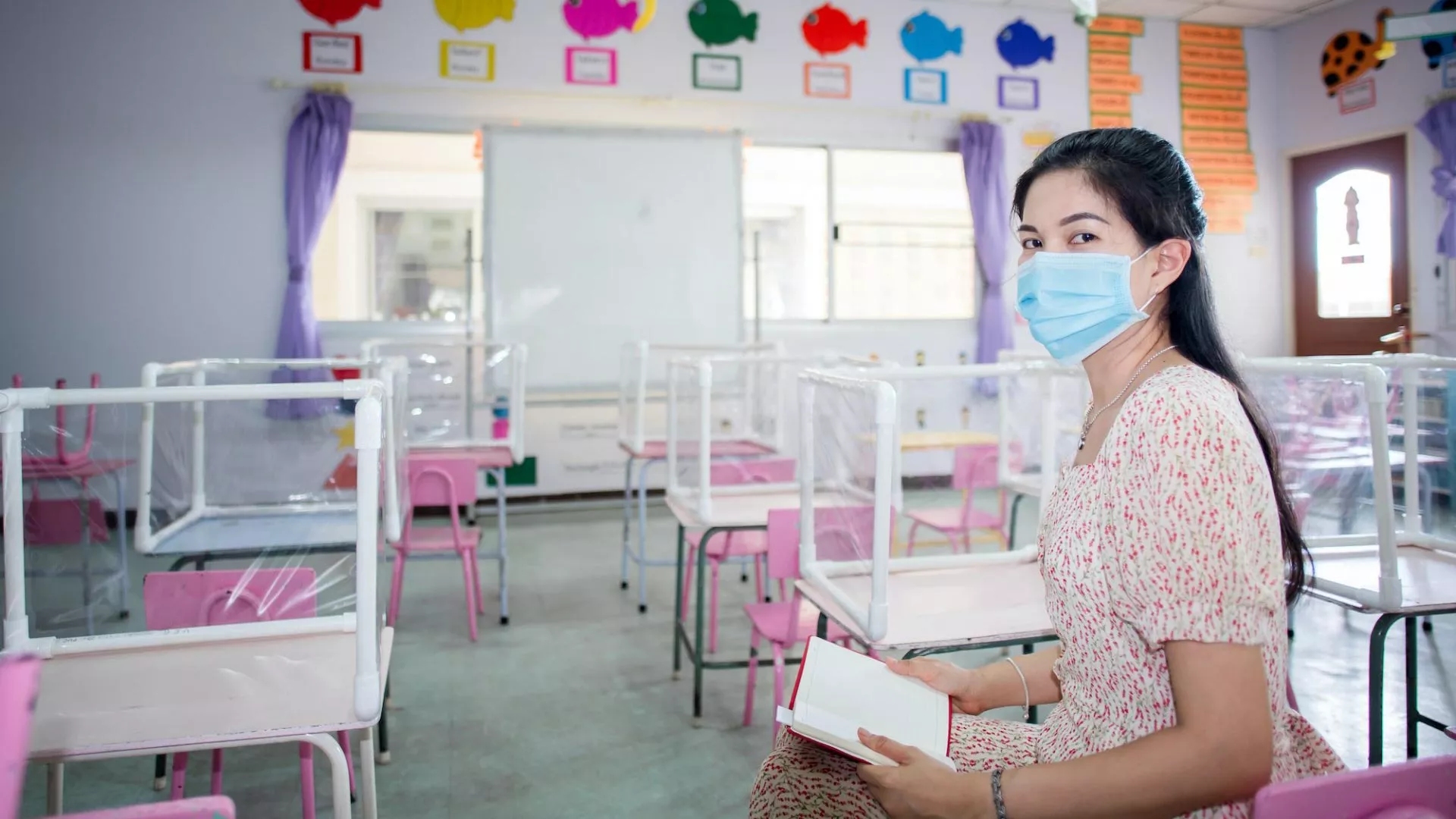Key Takeaways
- Paraeducators key to education experience.
- With little preparation they jumped into distance learning to make it work.
- Paraeducators will be critical to successful reopening plans.
Paraeducator Jamie Grissom was hoping her school in Scituate, Rhode Island, would open remotely this fall. Cases and hospitalizations had slowed after the initial surge last spring, but with more than 400 miles of sandy shoreline, the Ocean State drew flocks of tourists to its beaches, contributing to late summer spikes in COVID-19 cases.
“We didn’t see the levels of our neighboring states, but with so much unknown about this virus, I am concerned about health and safety with students and staff returning to our school buildings,” Grissom says.
Still, the Scituate School Committee voted four to one in favor of reopening with a hybrid model where students and staff will return in phases with classes beginning on September 14.
“I am still nervous about coming back but we’re doing what we need to do to get the schools ready, like setting up classrooms and putting signs up to remind students what they are supposed to do, like social distancing, hand washing, and wearing masks,” she says.
Grissom is the president of Scituate Paraprofessionals, a union that was 55 strong last school year but is now down about 13 members. Many of the paras chose to switch careers, take a leave of absence, or retire rather than return to classrooms. But Grissom has been working with NEA Rhode Island to make sure that the paras who remain will not only feel safe but will actually be safe when they return to school.
“We’ve also ensured that all paras are included in the professional development taking place before the students come in,” “Honestly being in the school and seeing my coworkers, with social distance and masks, has made me excited for the start of school and I really can’t wait to see the kids.”
It’s that “can-do” spirit and willingness to pitch in and make the most of a challenging situation that makes paras a critical part of students’ education, something they’ve proven time and again since the pandemic closed schools last spring.
Across the country, paras made videos, helped look up resources, led break out groups, put together packets, and delivered materials to students. Special education paras conducted one-on-one sessions with students and partnered with parents to find creative and effective ways to stay connected to their students.
Nearly half of NEA’s education support professionals (ESP) are paraprofessionals. As a critical part of the education workforce, NEA paraeducator members meet the needs of the whole student by assisting with classroom instruction and providing direct services to students and their parents. A large number (more than 80 percent) work with students with special needs, and all have professional responsibilities that contribute directly to academic achievement.
“Paraprofessionals make the schools run whether they are physically in them or virtually or some sort of hybrid!,” says Massachusetts paraprofessional Melissa Rebello. “They are the heart of the schools!”
And no matter what their fall looks like this year, they are preparing to make it work, says Grissom.
This week Grissom and her colleagues are back at work for staff preparedness for the school year with a return to the building on September 8th for professional development and training. Students return to school on September 14th.
Grissom works at North Scituate Elementary, where the school’s 220 students will all return at the same time, as will the other two. elementary schools in the district. At the middle school, students will also return at the same time and the high school will follow an A/B schedule. Students in Cohort A will attend in-person school one week, while students in Cohort B will attend in-person the next week.
While educating safely in-person during a pandemic will present a steep learning curve, the paras feel more prepared than ever to handle the challenges of distance learning for when students are online, and if they return to an all-virtual setting should cases spike.
“I feel like what we went through in the spring and how far we have come with learning so much about technology, learning platforms and the hard work that we did prepared us for whatever distance learning brings us this year,” she says. “Some of my paras had never been into a Google classroom or even knew how to access it...many got frustrated but stuck with it and by the end of the school year we were all proficient in a lot more technology than ever before.”
Grissom met with students online for ‘snack chats’ and read-alouds. “I think I’ve seen every new toy, everyone’s pet, every baby brother or sister!” she says. For the students it was simple, just fun with friends and a favorite educator, but though simple as it sounds, Grissom was building community, tending to mental health, and showing students who might be afraid, or anxious or lonely, how much she cared, which is an important condition for learning.
She also held a weekly Zoom meeting with all of the paras to check in and see if everyone was doing OK. Just as the students needed to see their educators’ faces, the educators needed to see each other’s faces.
“It reminded us that we need to keep up with each other. We shared strategies, but also stories, and just connected with each other,” she says. “There was a lot of teamwork, and it really brought us together as a group.”
Grissom plans to hold weekly check-ins this fall as well.
“We are going to do everything we can to make each other successful during a trying time.”


